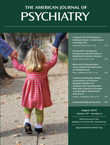Reply to Smith Letter
To the Editor: We would like to thank Dr. Smith for commenting on the standards of our "valuable report" on combination treatment for depression. We indeed observed in 12 patients a transient increase of one or two points on the suicide items of the HAM-D and/or Montgomery-Åsberg Depression Rating Scale at some point in the study. Following Dr. Smith's request, we would like to state that four of these patients were in the fluoxetine alone group, one was in the fluoxetine plus mirtazapine group, two were in the bupropion plus mirtazapine group, and five were in the venlafaxine plus mirtazapine group. In six of these cases, the elevation occurred at day 7, with three patients in the venlafaxine plus mirtazapine group and one patient in each of the other three groups. The other events occurred at various time points in the acute phase. Only one patient reached a score of 3 on the Montgomery-Åsberg Depression Rating Scale, whereas all of the other elevations did not go above an absolute score of 2 on either scale. Consequently, increased suicidal ideation was truly not a problem during the trial. It is important to reiterate that there was no suicidal attempt during the study.
In contrast, 12 patients at baseline had a score of 3 on the HAM-D and/or a score of 4 or 5 on the Montgomery-Åsberg Depression Rating Scale on the suicide item. Only one of these patients was in the group that experienced a transient elevation. Finally, in the group of 12 patients with such high scores at baseline, only two finished the 6-week study with a score of 2 on the HAM-D and a score of 3 on the Montgomery-Asberg Depression Rating Scale suicide items, with all other patients scoring lower.
We did not examine the suicide items in such details during the discontinuation/prolongation study. This is because as soon as patients met DSM-IV criteria and/or a Montgomery-Åsberg Depression Rating Scale score >12, which is a less stringent criterion for remission, they were brought in for additional treatment. In summary, increased suicidality did not appear to be a problem in this study (1) as well as the previous one (1), whereby about 100 patients have thus far been exposed to antidepressant combinations from treatment initiation.
1 : Mirtazapine and paroxetine in major depression: a comparison of monotherapy versus their combination. Eur Neuropsychopharmacol 2009; 19:457–465 Crossref, Medline, Google Scholar



